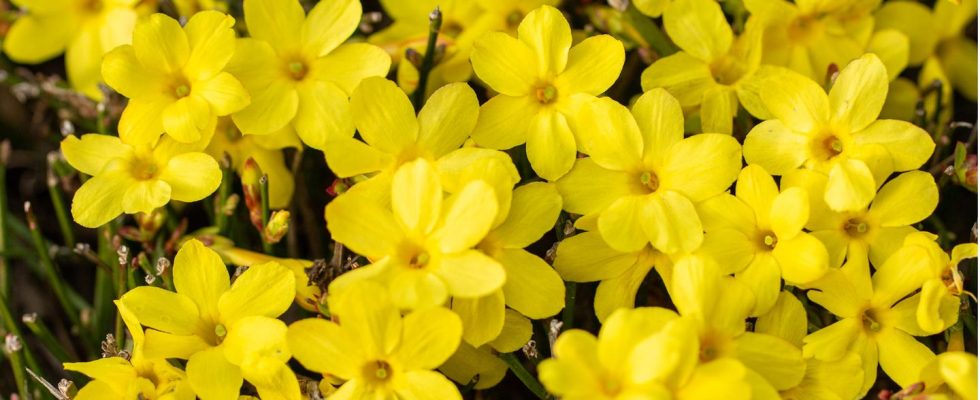Hardy
Easy to care for and decorative: Do you already know these colorful winter bloomers?
Decorative plants such as winter jasmine bloom from December to March
© BasieB/Getty Images
In winter, every once colorful balcony or garden turns into a dreary place. The good news is: despite the falling temperatures, you don’t have to do without colorful accents in your sparse flower pots or beds.
The trick is: If you plant so-called winter bloomers, you can enjoy a colorful variety on the balcony, in the garden or on the terrace even in the dreary season. Most varieties are generally easy to care for and are therefore also suitable for inexperienced hobby gardeners. Below we will introduce you to five winter bloomers in more detail and give you tips on what you should keep in mind when caring for the hardy plants.
Winter bloomers: Five beautiful plants for the garden
1. Winter Jasmine
This colorful ornamental shrub only shows its full blooms from December until March. The perennial Winter jasmine (Jasminum nudiflorum) is both decorative and practical: its branches are suitable, among other things, as a climbing aid or for greening walls and house walls. The winter bloomer grows equally well in flower pots as well as in the garden bed – ideally it grows up to three meters high. So that it can develop its full (flower) splendor, the easy-care winter jasmine should be planted in a sunny or partially shaded location with a distance of at least 60, even better 80 centimeters, from its garden neighbors.
2. Christmas camellia “Yuletide”
This evergreen plant also only blooms at the end of the year, more precisely from November to February: The Christmas camellia Comes already in bud, so all you have to do is wait for the bright red flowers with their striking golden yellow stamens to open and release their pleasant scent. Suitable for the garden as well as the balcony or terrace, this evergreen winter bloomer prefers a sunny to partially shaded location that is protected from the wind. The hardy ornamental shrub thrives best when planted in humus-rich, permeable soil. What the plant doesn’t like or tolerate, however, is waterlogging.
3. Scented Snowball “Dawn”
This vanilla-scented one is particularly nice to look at in winter Snowball “Dawn” (Viburnum bodnantense) with its impressive, pink flower balls – which appear from the beginning of November and bloom until March. The dense and bushy growing ornamental shrub can grow to be over two meters high, provided the site conditions are right: In other words, a sunny to semi-shady spot is the best choice. Ideally, the location is also protected from the wind. When it comes to soil, this winter bloomer prefers moist, nutrient-rich and well-drained soil. Another feast for the eyes of this plant is the crimson autumn color of its leaves.
4. Witch hazel
This hardy ornamental shrub develops yellow flowers as early as the end of December – provided the temperatures remain mild – but no later than January to March. This is not only particularly decorative, but also smells good. The Witch hazel (Hamamelis mollis Pallida) feels most comfortable in a sunny to partially shaded location, especially if you provide the perennial winter bloomer with loose, humus-rich soil. Ideally, the shrub grows up to four meters high. And requires little maintenance. If you want to do something good for the hardy plant, you can prune it regularly – but it is not a must.
5. Christmas rose “Double Ellen Picotée”
This evergreen is also a popular perennial Christmas rose. The winter bloomer is suitable for flower pots as well as for garden beds, is easy to care for and is also extremely robust against icy temperatures. The “Double Ellen® Picotée” (Helleborus) variety presents its baroque blooms from December through to March. And for the rest of the year, the hardy plant with its dark green leaves is an eye-catcher on every balcony or in the garden. What is also particularly practical is that the easy-care Christmas rose thrives just as well in a sunny location as in a shady spot. Ideally, it grows up to 30 centimeters high.
source: My beautiful garden
You might also be interested in:
This article contains so-called affiliate links. Further information are available here.


